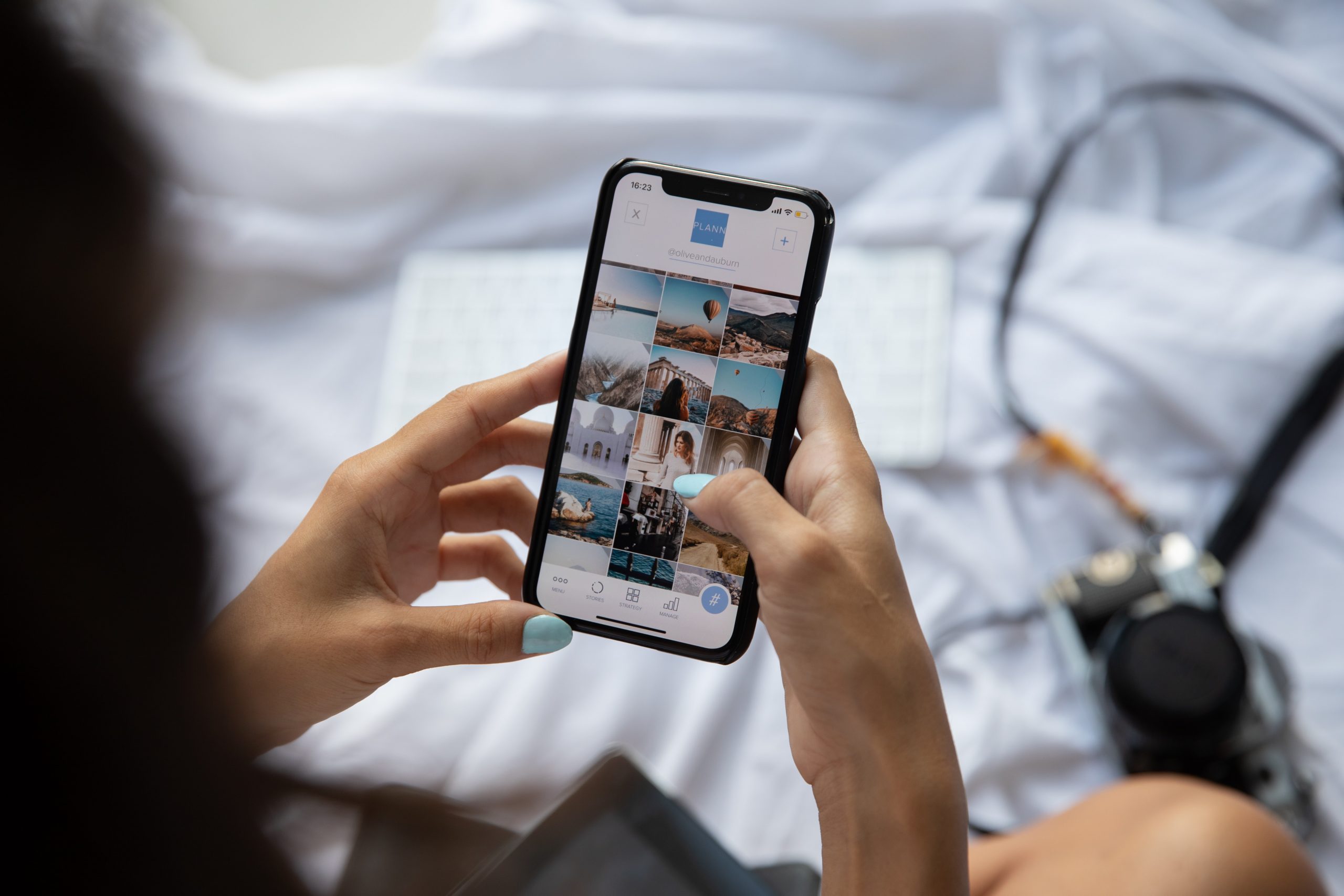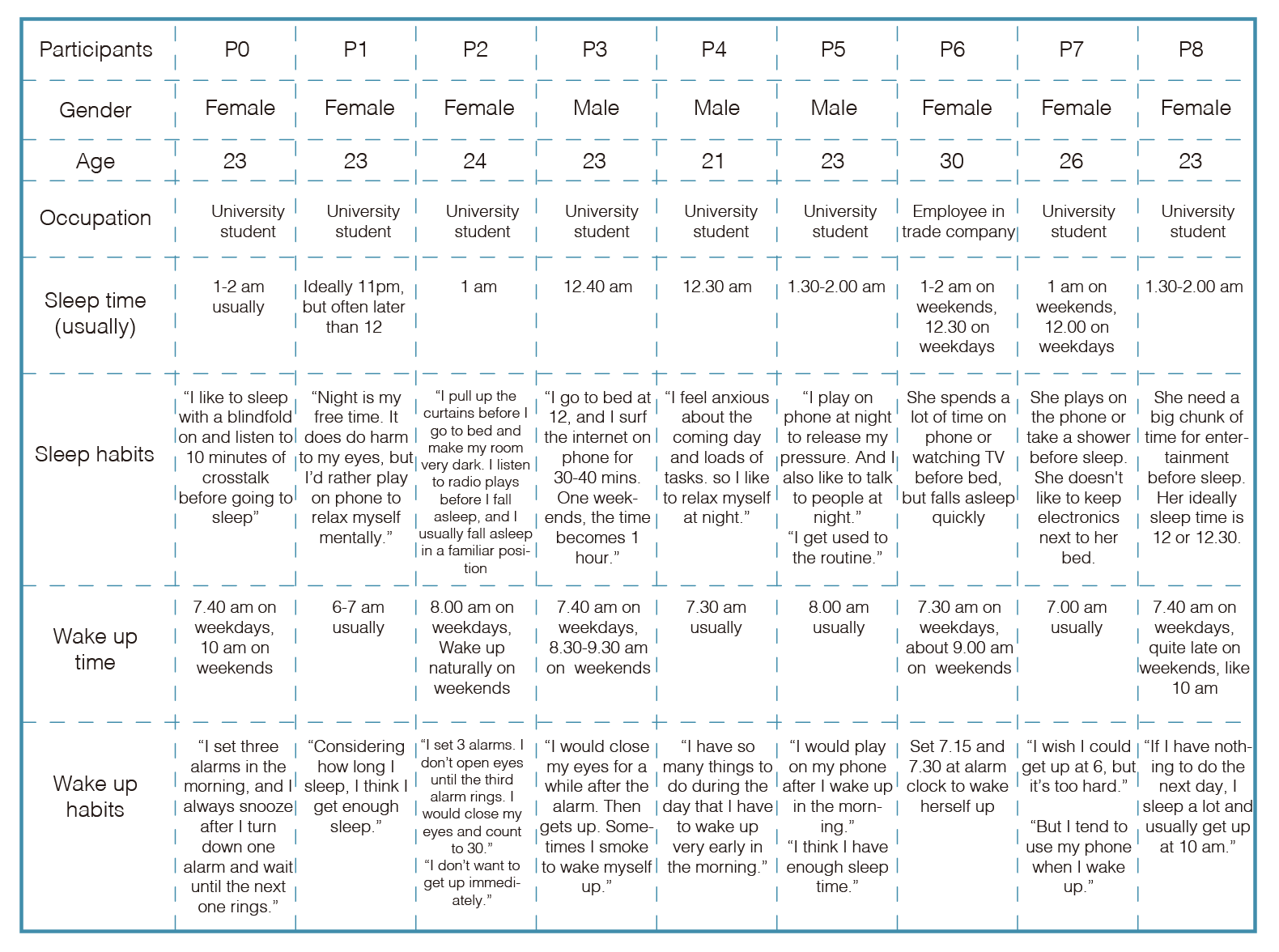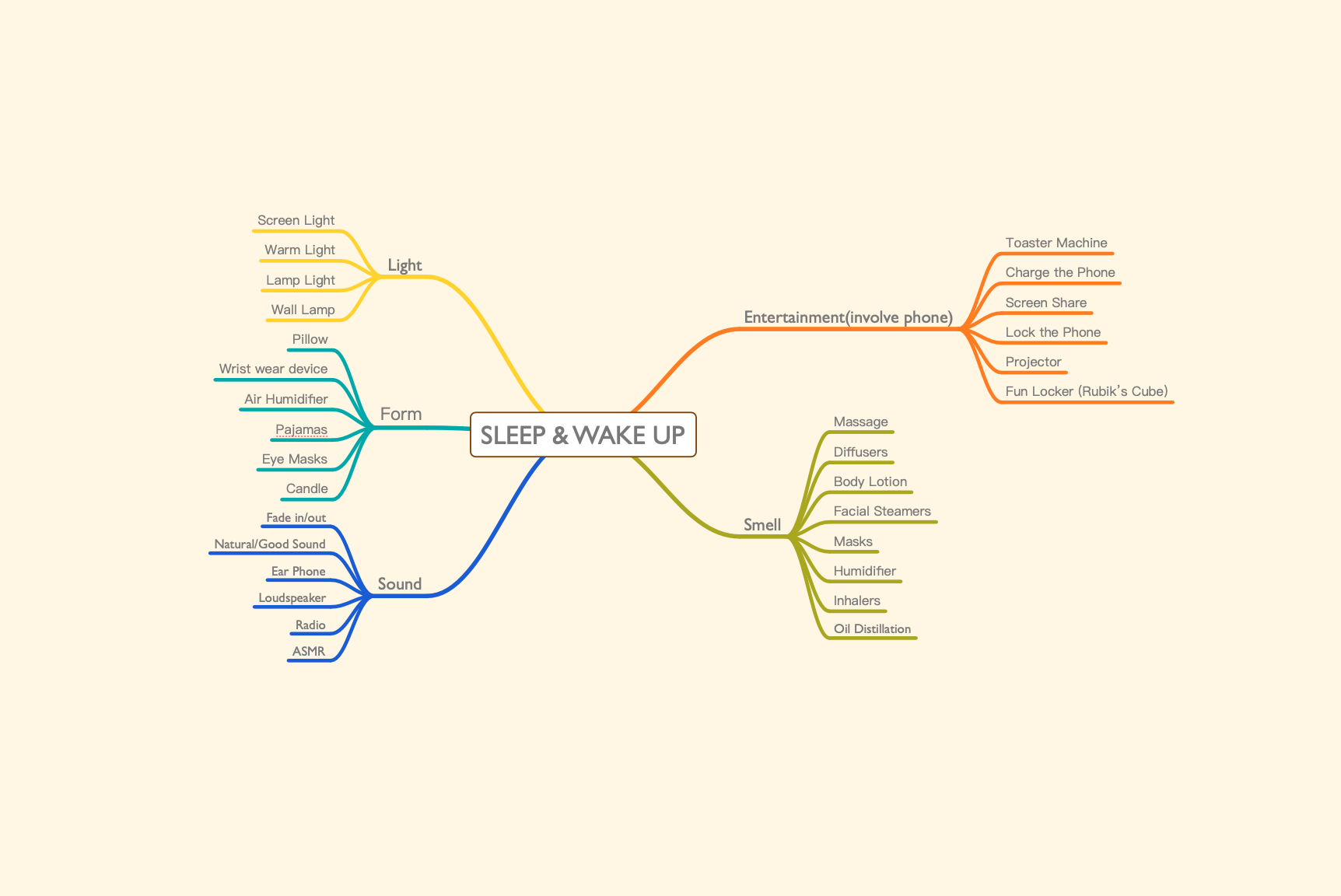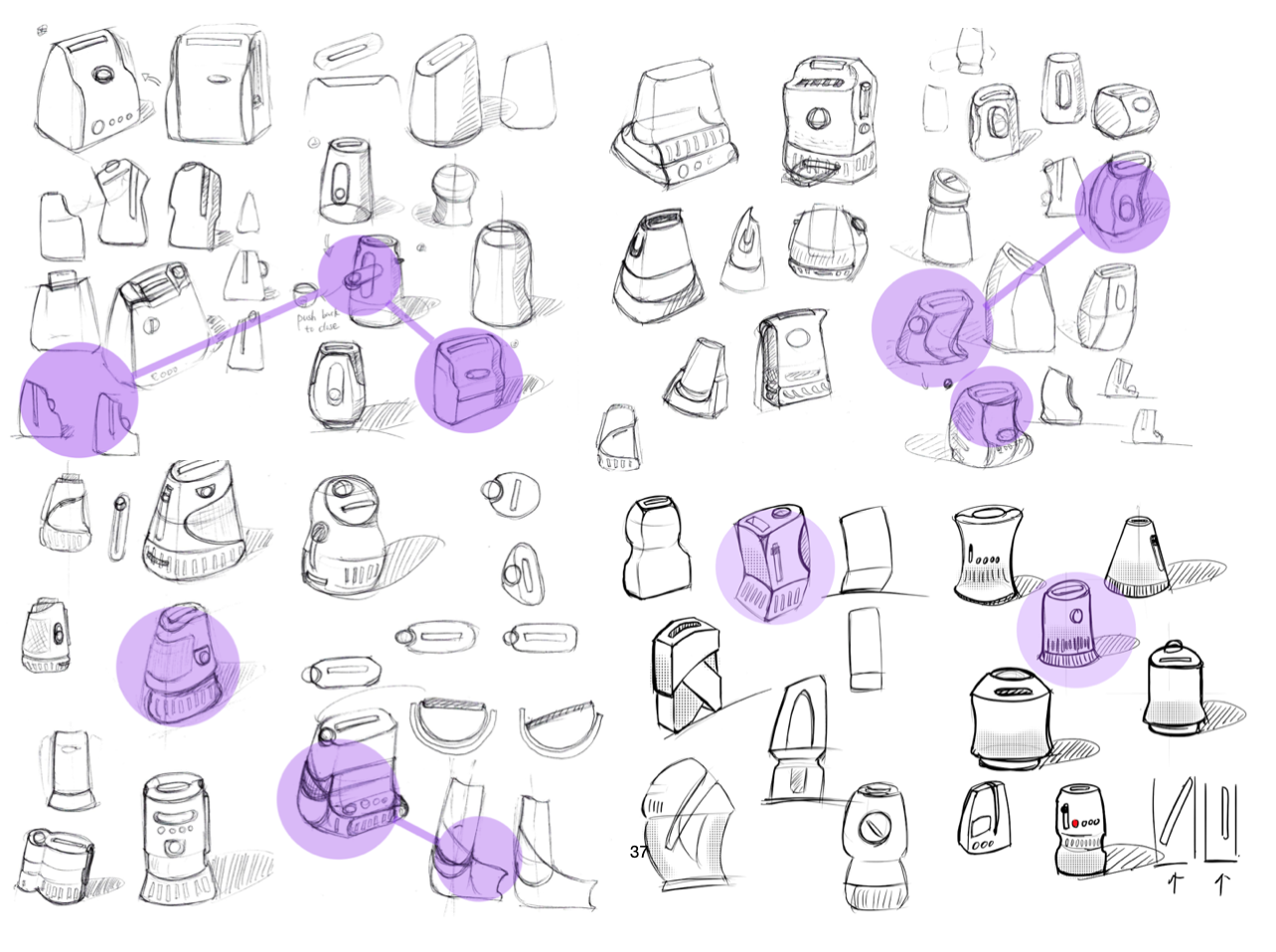Major Project
Sleep aids for mobile phone addicts [Read more]

NIGHT is a sleep aid device for phone addicts
“NIGHT” is a sleep aid device for users (18-30) who cannot form a healthy sleep routine due to mobile phone interference. The device should be placed on a bedside table and run about 1 hour before sleep time. It would build a sleep environment through smell, light and sound and lead users to sleep. The product then gently wakes users up in the morning with sound and light gradually entering, so that users can get a full rest every night. Particularly, to trigger the sound, users have to put their phones inside the product and lock it. After completing the whole sleep-wake process, there will be corresponding rewards on the app to increase user motivation and user loyalty. (see video: https://vimeo.com/451586232) This design hopes to change users’ behaviour through some slight environmental changes.

Mobile phone addiction causes many young people to suffer from sleep problems
Most young people are getting through sleep deprivation or disrupted sleep because of several main reasons, especially tech addiction. These sleep problems may lead to serious physical and mental health problems. Young people in the age range 18-30 have a strong dependence on mobile phones. Studies showed that 81% of people used their phones within an hour of going to sleep (Deloitte, 2017) and the proportion was higher among millennials. Mobile phones have become a major factor affecting users' sleep. Most young people are aware of problems with their sleep schedule but it's hard to change.
This project aims to help users reduce the impact of their phones before sleep and form a regular sleep schedule. Users who have irregular sleep patterns but wish to change their sleeping habits would be the target users.

Design research
Background research, existing product research, user needs research, scenario, auto-ethnography, interview, experiencing prototype, simulation exercises and scenarios are main methods used in research.
First user interviews were conducted after the background research to obtain users' sleep habits and attitudes towards mobile phones, and 9 participants were involved in the interview.
In stage 2, there were 11 subjects involved in the user evaluation, including 8 women and 3 men.

Key insights
Here are insights raised by secondary and primary research.
a) The addiction to mobile phones is one of the most significant reasons that lead to users' irregular sleeping schedules. Therefore, it is a key design point that persuades users to put down their phones and to reduce the use of phones.
b) Sound, light and smell are important factors that can influence the sleeping environment, and they should be properly arranged in design to form a better sleep atmosphere.
c) According to the environmental investigation, the product should be suitable for use in bedroom, and various placements of the product should be considered in design.

Design iteration
To realise the function of installing phone into the device and getting phone in the morning, a mechanical structure model with ratchet, pawl, pinions and racks was designed.
In self-testing, it was found that users may have different preferences for the angle and posture of placing the phone. Thus, an angle-test model was made to obtain user's favourite angle.
In order to assist the user interview, a cardboard form model was made to help users understand the product form and size more clearly. At the same time, this model was also used to explore the user's preference for the orientation of the bedside product and their preference of the speaker position.
As the user evaluation progressed, four foam models were made along with the development of sketches. Two of these models were used to compare the vertical and horizontal placement of mobile phones, and to compare the impact of these two different forms on product size. A model was used to test whether it is better to put phone from the side.
The final prototype consists of a functional model and a printed appearance model, which were used for both functional and formal testing.
All of these models help with product design iterations.

Light, smell & sound
(a) Users can make transparent slides with different colour patterns and install them on the projection to form different effects.
(b) Considering different release forms, solid smell tablets are used in the design, which is both easy to be replaced and customized.
(c) The selection of sound is carried out through the App terminal connected to the device.

App design
Additionally, an app is designed to increase user experience. The reward system in the app is to attract users, and the app can provide some sleep data. In logical flow design, the operational flow of the product was further optimized with some unnecessary function buttons being reduced. Factors that do not need to be set daily like sleep time were designed on the app, while volume, projection brightness that may be adjusted during sleep due to the environment were kept on the product.

Packaging
In consideration of sustainable development, the packaging will be designed to be able to be made into colour slides, which enables more interactions between users and the packaging and makes full use of resources.
Jiayi Lou
I hope my designs are beautiful, helpful, and can solve people’s problems.
As a designer, I found another way to see things. I like to discover insights from my life, and conduct research and find solutions to problems. During my studies in Loughborough, I integrated and sublimated my undergraduate design methods and design thinking, and further confirmed my interest in user research. I hope to continue learning and make life better through my own efforts.
Major Project
Sleep aids for mobile phone addicts